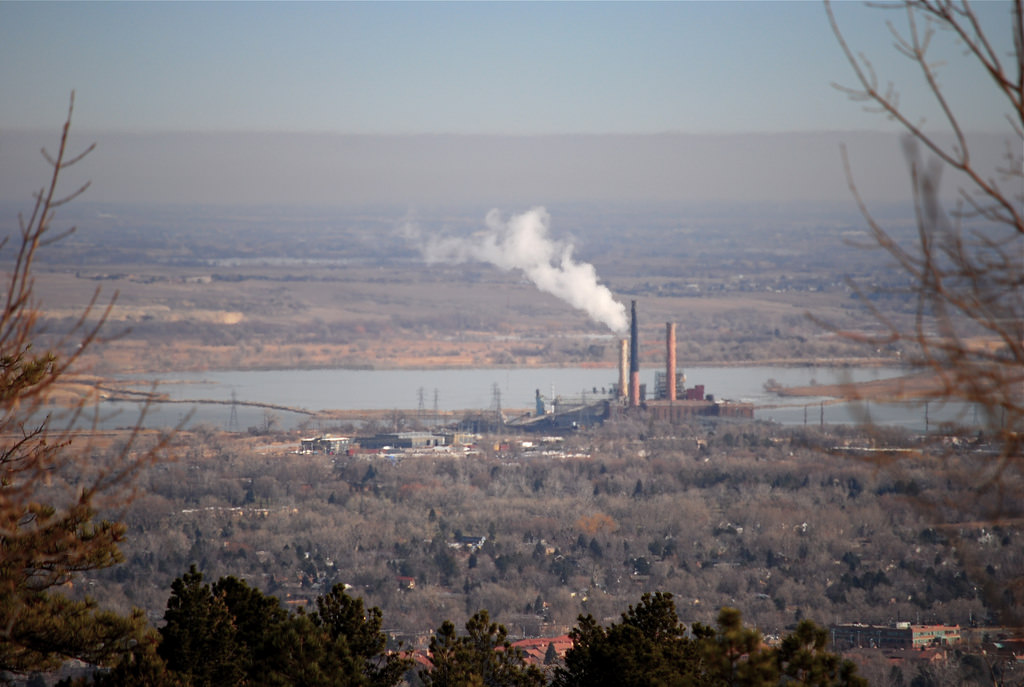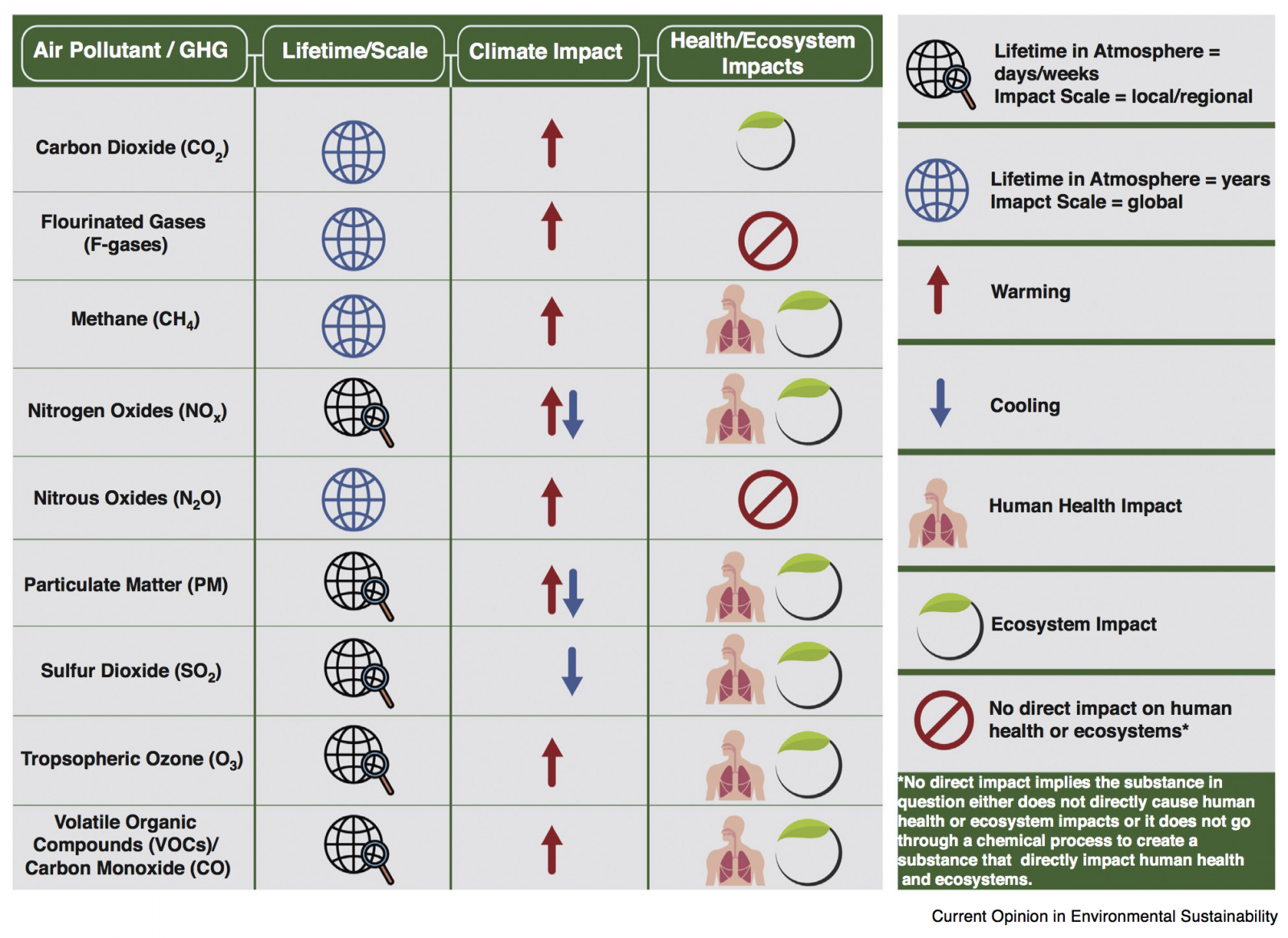Taking a holistic approach to air pollution and climate change
Few people think about what comes out of the tail pipes of their cars. But this exhaust can have complex impacts on climate and air quality.
Megan Melamed is an atmospheric scientist that lives in Colorado in the United States and points to an example from her own backyard. In Colorado, cars driving along highways belch out large volumes of carbon dioxide. This greenhouse gas is the greatest contributor to climate change. But automobile exhaust can cause other problems. During a strong wind, for example, ammonia molecules produced in cattle operations to the east can blow into cities like Denver. When that happens, they mix with the nitrogen oxide compounds that cars also produce and form particles in the atmosphere that are harmful to human health – contributing to Denver’s “brown cloud.”

In other words, in this region and others, the same source of emissions packs a one-two punch. “These are some of the things that are visible right in our doorstep that people don’t really think about,” says Melamed, Executive Director of International Global Atmospheric Chemistry (IGAC), a global research project of Future Earth.
Despite this mix, most environmental policies separate climate change from air pollution – with one set of laws addressing carbon dioxide and another addressing air pollutants like nitrogen oxides. That’s something that Melamed is trying to change. In a new paper, she and her colleagues argue for a new approach to climate change and air pollution, one that recognises that these two problems are deeply connected. They’re pressing scientists and government officials to ask: How can the same policy affect rising temperatures and the air people breath in mutually beneficial, or maybe contradictory, ways? The researchers published their recommendations in December in the journal Current Opinion in Environmental Sustainability.
Among society at large, “the role of some of these long-lived greenhouse gases versus some of these air pollutants and where they do overlap is still not clear,” says Erika von Schneidemesser, a research scientist at the Institute of Advanced Sustainability Studies in Potsdam, Germany, and a co-author of the new paper. “It’s a topic that needs more awareness.”
Overlap
In part, that’s because the science and policy realms often address air pollution and climate change in isolation. “I think that the science is catching up slowly,” von Schneidemesser says. But “if you look at a lot of different government departments, whether it’s in the European Commissions or environmental protection agencies, … they will typically have some department that is focused on climate change and some department that is focused on air pollution.”
But linking the work of those two kinds of departments can be tricky, von Schneidemesser says. Some pollutants, for example, contribute directly to rising temperatures around the globe. They include hydrofluorocarbons, a common set of compounds that are used in air conditioners and refrigerators. They are also potent greenhouse gases that trap heat in the Earth’s atmosphere – so much so that a number of nations signed an agreement last year to phase out their use.
Not every case is so simple, however. Take sulfur dioxide. Coal power plants and other industries expel this compound from their smokestacks. It’s harmful to human health but can also work against climate change. When it gets into the atmosphere, sulfur dioxide forms particles that bounce sunlight back into space, cooling the planet. In this case, any attempt to reduce the sulfur dioxide emissions coming from power plants in China, for example, might cause the region to warm by a little bit.
“There are benefits and tradeoffs,” von Schneidemesser says.

Such contradictions can lead to potentially harmful environmental policies, von Schneidemesser adds. She points to a recent push in Europe to encourage the use of wood burning stoves for heating houses. The thinking goes that wood burning generates less carbon dioxide than electric heating.
“But unless you’re using the most recent, up-to-date model of stove, you’re going to get a lot of particle matter emitted,” she says. “That has pretty significant consequences for air quality, even though you might get some small gains for carbon dioxide.”
Knowledge
To tackle issues like these, Melamed and von Schneidemesser say that it’s critical to address emissions from various sources in a holistic way. They suggest three considerations that policy-makers should think about before drafting new rules. The first is the mix of emissions – how a policy might affect a wide range of greenhouse gases and pollutants. The second is to consider how long the greenhouse gas or pollutant will last in the atmosphere, which indicates where impacts will be felt – would a policy affect the whole planet or just single region? Finally, there are benefits and tradeoffs – whether a policy might help in the fight against climate change but harm air quality, or vice versa.
Such an approach could create hard choices, Melamed says, potentially creating a situation in which governments have to choose between improving air quality or combatting climate change.
“We’re not going to preach about which one needs to be done. But you need to be aware when you make a choice what those consequences will be,” Melamed says. “If improving air quality is your priority, then maybe you end up emitting more greenhouse gases. But just to know that you are making those choices.”
In other situations, the holistic approach offers win-win scenarios. Melamed gives the example of recent regulations in the United States that sought to limit the amount of mercury gas that power plants emit. In the course of meeting those rules, many plants reduced their carbon dioxide emissions by a lot – without even intending to.
And, von Scheidemesser adds, that is a good example of how concerns over air quality can help to push forward policies that will also stem warming around the world. Everyone, she says, wants to breathe clean air.
When it comes to air pollution, “you can see it. You can go out on days when there is really bad air quality, and you can take a picture and capture that,” von Scheidemesser says. “You can, in many cases, get people to act on that more readily than you can on climate change.”
She and Melamed say, however, that while that argument may be obvious to scientists, it’s new to many in government. For that reason, it could take some time to turn this holistic view into concrete policies. But von Schneidemesser argues that it’s critical to make the case: “When we work with or talk to different people who are implementing different regulations or making policy decision, it’s important to make sure this is a message that really gets out there.”
DATE
March 1, 2017AUTHOR
Daniel StrainSHARE WITH YOUR NETWORK
RELATED POSTS
International Day of Clean Air for Blue Skies
Thailand National Committee Discusses Roles of Political Parties for Disaster Management
Global Distributive Justice and Systemic Transformations Key to Planetary Stability, Study Finds